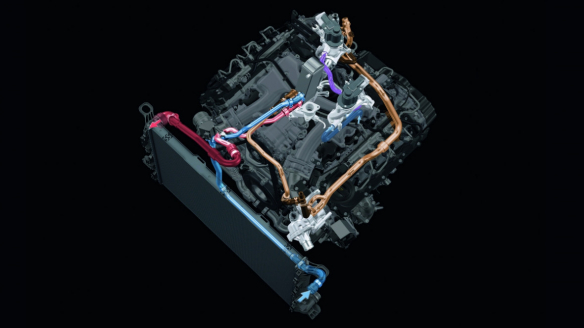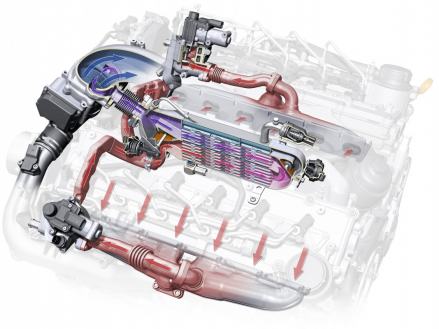Exhaust gas recirculation
In all internal combustion engines, undesirable nitrogen oxides are formed when combustion takes place at high temperatures with excess air. These gases can be largely avoided, however, through the use of exhaust gas recirculation (EGR).
In Audi TDI engines, EGR returns a high proportion of the exhaust gas to the combustion chambers. This reduces the amount of fresh, oxygen-rich air in the chambers. The exhaust gas also inhibits the chemical reactions taking place in the combustion chamber. Both of these effects cause combustion temperatures to fall, thereby significantly reducing the amount of NOₓ produced.
To increase efficiency, water-cooled EGR systems are used on all diesel engines today. On its way back to the engine, the exhaust gas flows through a water cooler with a map-controlled cooling capacity. This additional cooling of the exhaust gas allows a greater amount of exhaust gas to be recirculated, while also reducing the initial temperature in the combustion chamber.
Audi has significantly increased efficiency in this area of technology, too. In the 3.0 TDI, for example, the separate low-temperature cooler has been eliminated, along with its pump drive. The engine has a dedicated high- and low-temperature circuit that does an excellent job supplying the EGR cooler. The efficiency of the entire cooling system has increased significantly.
Status: 2011

